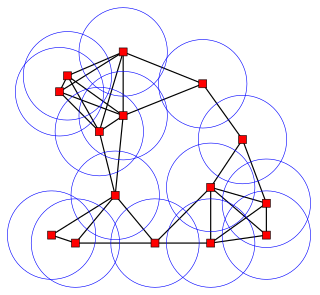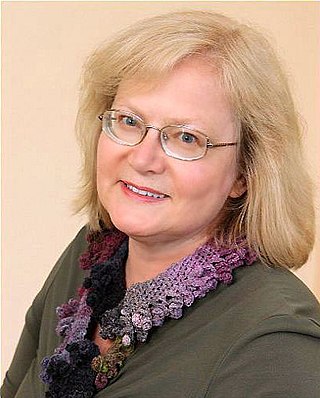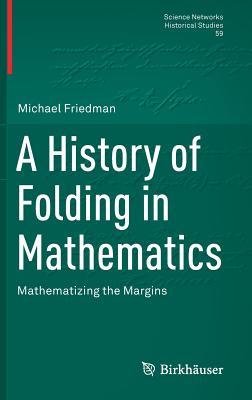
Euclid was an ancient Greek mathematician active as a geometer and logician. Considered the "father of geometry", he is chiefly known for the Elements treatise, which established the foundations of geometry that largely dominated the field until the early 19th century. His system, now referred to as Euclidean geometry, involved new innovations in combination with a synthesis of theories from earlier Greek mathematicians, including Eudoxus of Cnidus, Hippocrates of Chios, Thales and Theaetetus. With Archimedes and Apollonius of Perga, Euclid is generally considered among the greatest mathematicians of antiquity, and one of the most influential in the history of mathematics.

Geometry arose as the field of knowledge dealing with spatial relationships. Geometry was one of the two fields of pre-modern mathematics, the other being the study of numbers (arithmetic).

Liu Hui was a Chinese mathematician who published a commentary in 263 CE on Jiu Zhang Suan Shu. He was a descendant of the Marquis of Zixiang of the Eastern Han dynasty and lived in the state of Cao Wei during the Three Kingdoms period of China.

Ronald Lewis Graham was an American mathematician credited by the American Mathematical Society as "one of the principal architects of the rapid development worldwide of discrete mathematics in recent years". He was president of both the American Mathematical Society and the Mathematical Association of America, and his honors included the Leroy P. Steele Prize for lifetime achievement and election to the National Academy of Sciences.

Discrete geometry and combinatorial geometry are branches of geometry that study combinatorial properties and constructive methods of discrete geometric objects. Most questions in discrete geometry involve finite or discrete sets of basic geometric objects, such as points, lines, planes, circles, spheres, polygons, and so forth. The subject focuses on the combinatorial properties of these objects, such as how they intersect one another, or how they may be arranged to cover a larger object.
Problems of the following type, and their solution techniques, were first studied in the 18th century, and the general topic became known as geometric probability.

Branko Grünbaum was a Croatian-born mathematician of Jewish descent and a professor emeritus at the University of Washington in Seattle. He received his Ph.D. in 1957 from Hebrew University of Jerusalem in Israel.

Daina Taimiņa is a Latvian mathematician, retired adjunct associate professor of mathematics at Cornell University, known for developing a way of modeling hyperbolic geometry with crocheted objects.
Joseph O'Rourke is the Spencer T. and Ann W. Olin Professor of Computer Science at Smith College and the founding chair of the Smith computer science department. His main research interest is computational geometry.
Sherman Kopald Stein is an American mathematician and an author of mathematics textbooks. He is a professor emeritus at the University of California, Davis. His writings have won the Lester R. Ford Award and the Beckenbach Book Prize.
Hazel Perfect was a British mathematician specialising in combinatorics.
Geometric Folding Algorithms: Linkages, Origami, Polyhedra is a monograph on the mathematics and computational geometry of mechanical linkages, paper folding, and polyhedral nets, by Erik Demaine and Joseph O'Rourke. It was published in 2007 by Cambridge University Press (ISBN 978-0-521-85757-4). A Japanese-language translation by Ryuhei Uehara was published in 2009 by the Modern Science Company (ISBN 978-4-7649-0377-7).
Euler's Gem: The Polyhedron Formula and the Birth of Topology is a book on the formula for the Euler characteristic of convex polyhedra and its connections to the history of topology. It was written by David Richeson and published in 2008 by the Princeton University Press, with a paperback edition in 2012. It won the 2010 Euler Book Prize of the Mathematical Association of America.
Algorithmic Geometry is a textbook on computational geometry. It was originally written in the French language by Jean-Daniel Boissonnat and Mariette Yvinec, and published as Géometrie algorithmique by Edusciences in 1995. It was translated into English by Hervé Brönnimann, with improvements to some proofs and additional exercises, and published by the Cambridge University Press in 1998.

A History of Folding in Mathematics: Mathematizing the Margins is a book in the history of mathematics on the mathematics of paper folding. It was written by Michael Friedman and published in 2018 by Birkhäuser as volume 59 of their Historical Studies series.

Geometric Exercises in Paper Folding is a book on the mathematics of paper folding. It was written by Indian mathematician T. Sundara Row, first published in India in 1893, and later republished in many other editions. Its topics include paper constructions for regular polygons, symmetry, and algebraic curves. According to historian of mathematics Michael Friedman, it became "one of the main engines of the popularization of folding as a mathematical activity".

Combinatorial Geometry in the Plane is a book in discrete geometry. It was translated from a German-language book, Kombinatorische Geometrie in der Ebene, which its authors Hugo Hadwiger and Hans Debrunner published through the University of Geneva in 1960, expanding a 1955 survey paper that Hadwiger had published in L'Enseignement mathématique. Victor Klee translated it into English, and added a chapter of new material. It was published in 1964 by Holt, Rinehart and Winston, and republished in 1966 by Dover Publications. A Russian-language edition, Комбинаторная геометрия плоскости, translated by I. M. Jaglom and including a summary of the new material by Klee, was published by Nauka in 1965. The Basic Library List Committee of the Mathematical Association of America has recommended its inclusion in undergraduate mathematics libraries.
Lydia Rosina Bieri is a Swiss-American applied mathematician, geometric analyst, mathematical physicist, cosmologist, and historian of science whose research concerns general relativity, gravity waves, and gravitational memory effects. She is a professor of mathematics and director of the Michigan Center for Applied and Interdisciplinary Mathematics at the University of Michigan.









